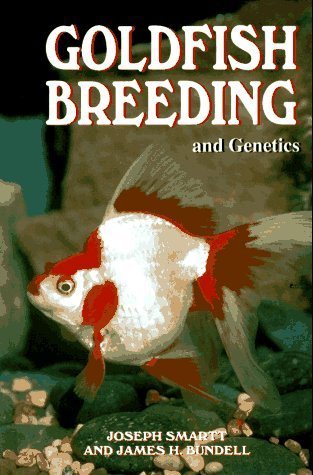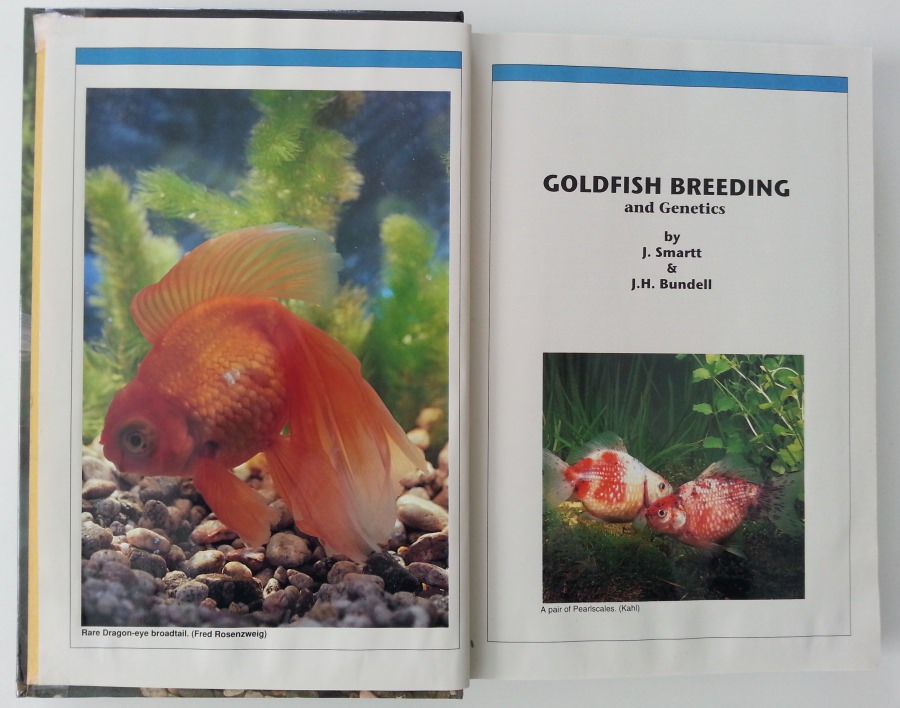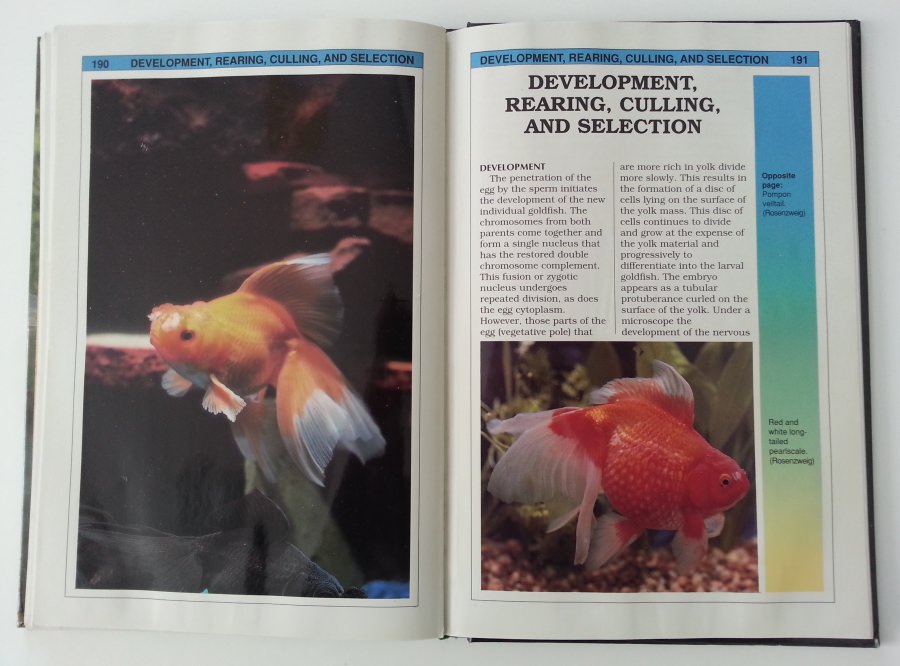- Home
- Books About Goldfish
- Goldfish Breeding Book Review
Goldfish Breeding and Genetics Book Review
Looking for an in-depth, well written book about Goldfish breeding?
I
did not receive a free copy of this book and I was not asked to review
it. It's here because I view it as one of the most useful resources for
anyone wanting to learn more about breeding Goldfish.
If you want to buy it, click on any of the images that link to Amazon. I will earn a small commission, at no cost to you.
This book is very expensive. It is a TFH (Tropical Fish Hobbyist) publication printed on very high quality stock.
This book contains many photographs by the famed fish photographer Fred Rozenzweig.
The book is not just about breeding. The authors start with an in-depth study of the domestication and evolution of the Goldfish, followed by a chapter describing 15 varieties in detail, but also including photographs of seldom seen varieties.
The book also covers in-depth the ideal "aqueous environment" for Goldfish before moving on to the breeding process, starting with brood stock management.
The book is aimed at those wanting to improve the quality of their fish through selective breeding and not breed their Goldfish just for the sake of it.
I wish this book had been available when I started breeding Goldfish seriously. It would have saved a lot of failures and disappointments.
Book Details:
|
Print length: 256 pages Available as: Hard cover only |
Publication date: 1996 Size: 10.5x7.25x1 inches |
What Are the Benefits from Owning the Book?
All the essential information for successfully breeding Goldfish is brought together:
- 15 of the most common varieties, with accompanying photographs, are described in detail so you know what characteristics quality fish exhibit, and what you should be aiming for with your own spawns.
- How to select brood stock
- Sexing and conditioning brood stock
- Spawning options - natural and artificial
After spawning the importance of water temperature in the development of the larvae in the egg is explained, and after hatching, what foods are best and what are potential pollution hazards.
Diseases, parasites and predators of fry and how to avoid them is described, as is the last stage of rearing, the selection process of the best examples to keep for the next generation.
Here is a complete list of its chapters
- The Goldfish-An Introduction
- Domestication and Evolution
- Varieties of Goldfish
- Genetic Principles for the Goldfish Breeder
- Goldfish Genetics
- Goldfish and Their Aqueous Environment
- Brood Stock Management
- Development, Rearing, Culling, and Selection
- Showing and Judging
- The Future of the Goldfish
- Appendix A-The Literature of Goldfish
- Appendix B-Goldfish Societies
- Appendix C-Tabulated Summaries of Matsui's Date
- Suggested Reading
- Bibliography
- Index
What Makes This Book Special?
This book has been written by experts in their fields. It is the only one I know of that describes Goldfish genetics to the level it does. Only scientific publications would delve deeper into the subject.
The number of quality color photographs throughout the book, almost one on every page, makes it a delight to just browse through the chapters.
What's the Best Features of This Book?
One of the authors has a PhD in genetics, so it is little wonder so much of the book is dedicated to this subject.
This section of the book highlights the difficulty the breeder has in producing quality fish, even when both parents may exhibit excellent characteristics of a particular variety. It also highlights the dangers of inbreeding, and ways to avoid them.
The step by step breeding process, starting with brood stock management, right through to the selection process of different scale, fin, eye and body conformation types is all explained in detail.
What I Don't Like About the Book
To give a balanced opinion of the book, I have to include a couple of dislikes.
- To fully understand the genetics section, it would be useful to have a degree in genetics. 29% of the book is devoted to the subject. For the vast majority of serious breeders, I feel it could have been slimmed down considerably to an "executive summary".
- A few of the photographs have the wrong captions, but they are unrelated images to the accompanying text.
- The use of a microscope to facilitate early culling of twin tailed varieties is suggested on several occasions. I can only conclude the authors have very small spawnings, as it would be totally impractical to use a microscope to view several thousand eggs, with the possibly of only 5-10% having single tails. It is much easier, and safer, to let the fry hatch, and cull single tailed fry after a week or two when they are much easier to identify.
What Other Reviewers Say
This book is rated at 4.9 out of 5 stars on Amazon.
The main complaint from the 10% that gave it a 4 star was the amount of detail concerning genetics and how novices may struggle to understand the information. Most purchasers appear to be experienced Goldfish keepers or breeders.
I agree that chapters on genetics are much
too detailed for most breeders, but the chapters on varieties, the ideal water conditions and breeding are all easily understood.
My rating of this publication is 4.75 stars – a must have for serious Goldfish breeders.
Top of Goldfish Breeding Book Review page


